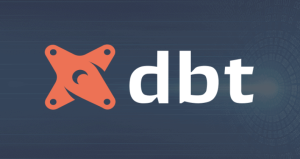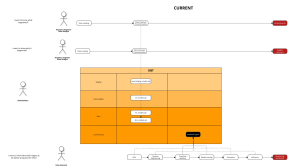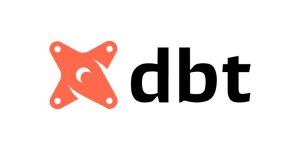Written by SageHR
Big Data analytics and their benefits have long been appreciated in executive circles. The data available and insights gained from this information helps organisations to make decisions that can improve operational performance, uplift productivity and positively impact business revenues.
For Human Resources there are a multitude of benefits that Big Data can bring, all of which have continued in their evolution thanks to continuing developments in data analytics. Furthermore there are a number of key trends developing for HR big data all of which can be leveraged for maximum impact.
People analytics ultimately empowers Human Resources to make informed decisions and enables them to advise their organisations accordingly, based on the information gleaned from the data insights. By fully optimising the data, data driven decisions can prove to be impactful, particularly where there are vast amounts of data available to analyse and disseminate trends.
Here we consider ten of the benefits that can be realised through the use of Big Data in human resources.
Benefit # 1: Hiring processes optimised & streamlined
Organisations are in a position to make far smarter hiring decisions thanks to Big Data. The data available prior to, as part of and following the hiring process all support organisations to have a more engaged and efficient workforce.
One of the leading benefits of Big Data in hiring processes, is that HR managers are able to leverage talent acquisition software, which allows HR to collect, store and evaluate the CV’s of what can be 1000’s of applications received.
This streamlining effect helps HR to reduce the time taken on what can be a hugely time consuming task.
Sage HR’s recruitment module has been designed with these factors in mind. Enabling HR and hiring managers to access on demand applicant screening, access applicant data on the move thanks to mobile optimisation and schedule candidate interviews with ease.
Benefit # 2: Better understand growth opportunities
Big Data analytics can help HR and organisation leaders to understand and identify opportunities for growth. It’s the effective use of workforce analytics that can help respond and predict times when growth will be beneficial to the organisation.
In accessing the data in this way HR leaders can influence business decisions in real time, enabling increased proactivity around workforce growth planning and forecasting future needs in response to organisational uplifts.
Google states on its website that it “use[s] People analytics as a foundational building block that informs everything we do to find, grow and keep Googlers”
Google for example is using a analytics team to better invest in their data infrastructure, answer the essential questions that really matter to the business, whilst also using people analytics as a vital component of insights into business partnerships.
Benefit # 3: Increase employee engagement levels
Employee engagement is always a hot topic in HR. Perhaps even more so due to the current age of remote based working.
Yet the interesting use for Big Data in improving the engagement of employees is more than simply tracking data around employee engagement surveys. It is also possible to highlight, reward and recognise top performers too.
Employee engagement is one of the key parts of running a business
Furthermore, the use of big data for employee engagement can also identify those who may be losing motivation, or facing performance issues. Data analysis around areas such as key performance indicators, achievement of targets, through sickness absence can all be highlighted to HR where individuals may require additional support.
In turn this data can be used to advise and support managers on where their team members and employees can be developed, supported and engaged.
Benefit # 4: Enable decisions that are more informed
Data analysis enables HR teams to be more informed and in turn more strategic. Dashboards comprising data that has been collected and analysed will support HR with being able to understand the story of the organisation, what’s happening and crucially what trends are being predicted based on historical data.
The range of big decisions that can be made thanks to the use of Big Data includes hiring, performance management, internal mobility, succession planning and the employee experience overall.
Benefit # 5: Decrease attrition and uplift employee retention
Employee experience is a key factor in driving down employee attrition, which means that beyond the focus to drive greater levels of engagement which can lead to improved levels of retention. It’s equally important to work with big data analytics that are utilised to reduce employee turnover.
The picture that data analytics can paint will help HR to locate patterns and trends across teams, departments and service lines. Highlighting issues that may be about to arise and responding in real time to attrition issues as they unfold.
The reality is that regardless of the size of your business, employee turnover is a major concern
For HR the impact of this data can be significant, particularly when you consider the negative impact and cost that attrition has on any organisation. By having access to data, it’s possible to both effectively measure and also identify remedies and solutions.
Microsoft were able to maximise their use of HR analytics to develop statistical profiles of employees likely to leave their company. One particular group, employees who were hired directly from University were identified as a high flight, following a relatively short period of time with the company.
The response of HR teams was to deploy a series of HR interventions that enhanced workplace communication, but also supported graduate hires with mentors, coaches and development plans that had increased transparency. Thus driving down turnover and improving engagement with this highly talented cohort hired to the organisation.
Benefit # 6: Identify employee skills gaps
Data on employee skills throughout the organisation can be leveraged to great effect. By using predictive models and AI in this area, it’s possible for HR to identify development opportunities, maximise skill crossover opportunities in project deployments, ensure employees are working in the right roles and identify career planning opportunities.
By better leveraging skills that already exist in the organisation and identifying those that can be enhanced has maximum benefits for organisation, but also the individual. In turn positively impacting vital stages of the employee life-cycle.
With more than 1.3 million employees in the United States alone, strategic analytics is vital for the HR organisation to influence decision making
Wal-Mart, the American retail chain, opted to dedicate a team specifically to people analytics. In doing so, the team was able to access insights into employee capability and employee turnover.
The focus led to significant improvements in identifying roles and career paths for employees by identifying skills gaps along with training, development opportunities. The outcome has not only led to decreasing attrition, but improved employee performance, satisfaction and efficiency in roles too.
Benefit # 7: Improve workforce planning
Big data supports HR to leverage data for better resource planning and improved workforce management decisions. From utilising tools to schedule when teams are working, to task and activity management, through to time and attendance tracking.
The use of Big data in this area benefits the organisation by enabling data-driven scheduling to dispatch that promotes balance willst also improve efficiency in the workplace.
Juniper Networks for example, a networking and cybersecurity solutions company, have leveraged big data to make improvements to the ways in which customer accounts were being resourced.
HR needed to figure out how its initiatives and activities could yield a talent pool that was better prepared and empowered to innovate
A formal network and accounts analysis, powered by big data uncovered valuable insights into resource efficiency and how teams could be deployed on client accounts. The data described how 10 percent of Junipers employees were involved in working on one client account.
Yet by accessing this information it was possible for HR to redeploy this resourcing strategy to better effect, with an outcome of the account growing to become their largest customer due to efficiency gains in the redeployment of resources to far greater effect.
Benefit # 8: Identify ineffective HR processes
The power of analytics is that they not only support HR in looking outwardly into the business. But they also enable HR to identify what can be improved within the HR function itself.
Effective HR decision-making is based on considering the best available evidence combined with critical thinking
By utilising big data to this effect, HR can readily identify any processes that aren’t yielding results, or are erroneous and inefficient. This process also supports HR in building evidence based strategies leading to improved decision making.
Furthermore the overarching health of the organisation can be revitalised and uplifted by this approach.
Benefit # 9: Link employee data to operational metrics
HR can truly maximise the outcomes of big data by linking employee data metrics that are aligned with the wider organisation. By making the link between data and operational performance, it’s possible to correlate the information in order to identify where improved outcomes can be achieved.
For example performance reviews are deeply connected to operational metrics, targets and KPI’s, yet it’s the analysis of the outcomes of performance reviews that enables HR to identify where metrics can be greater attuned to improve operational outcomes and organisation wide results.
Benefit # 10: Educate and inform Leadership teams
Big data provides HR with the vital details that engenders the support they provide to leadership teams. Crucially this information can be used to educate and inform organisational leaders too.
By leveraging hard facts and having a data story to support recommendations, HR can be empowered by possessing solid business acumen that informs their advisory and decision based leadership.
Fundamentally, business decisions relating to structural changes or organisational developments are greatly benefited by solid HR advisory. It’s by harnessing business big data to this effect, that HR can truly step into their own in educating business leaders.
Bringing it all together
Big Data and its effective usage is unquestionable in the benefits that it can bring to HR and the organisation as a whole. The transformation that can be achieved can be impactful and far-reaching.
For any organisation that wants to see strong results with their people & talent strategies, accessing the data that already exists within your organisation, reports accessible via ERP’s and HR management software will yield transformative results that can be.
A more grown-up approach to metrics can help prove HR’s value to the organisation
HR analytics are undoubtedly becoming an increasingly central focus to the people function. Data and being able to measure what matters is an accepted and celebrated way of doing business and this has certainly permeated the approaches being taken by HR professionals.
For organisations and their HR leaders, teams and practitioners respectively this means that value creation for both human capital and data are an increasingly valuable asset and one that has untold potential for people teams as developments in big data continue to unfold.
- What the heck is data analytics? Explain it like I’m five. - June 8, 2022
- Best Practices for Managing Data Access to BigQuery - October 11, 2021
- How PE firms can turn data science into a competitive advantage - October 11, 2021



